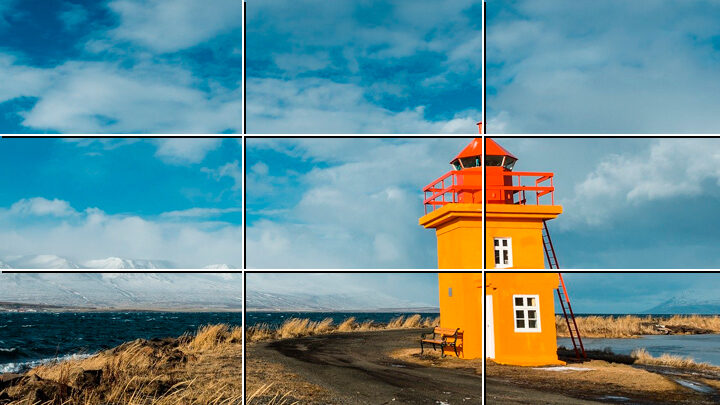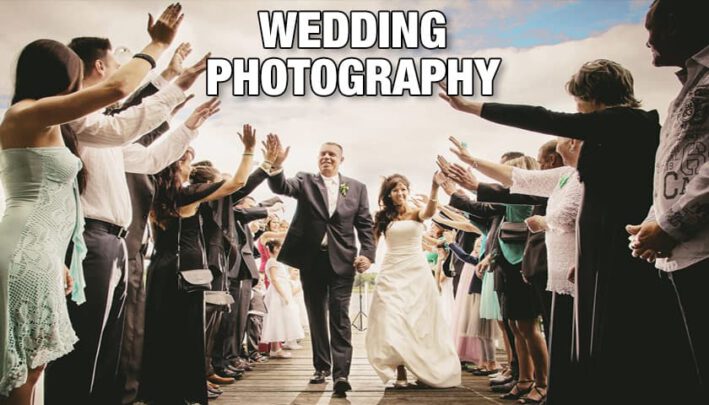Hits: 112
RULES OF COMPOSITION
Rules are meant to be broken. But before you go ahead and break some, it‘s always good to know what these rules are. After all, they are there for a reason. The same applies to photography too. There are certain rules of composition (they can be aptly called guidelines of compositions if you find the word „rules“ to restricting) that need to be followed to get the perfect picture. This doesn‘t mean that you always have to follow these rules; you can break them at times, however before you walk down that path, it‘s best to know what these rules are!
What is Composition by photography?
Composition refers to how different elements and objects are placed in relation to each other in the picture. It is not only limited to photography, it applies to visual arts such as designing and painting too. Knowing the rules of composition enables an artist to portray their art in a way that makes the maximum impact on the viewer. Hence, composition plays a key role in photography.
After understanding the basic rules of composition, you‘ll be able to not only grasp why some pictures look better than others, but also learn to click better pictures. There are ‚n‘ number of composition techniques that you can apply to your photography; some of them contradict the other. Depending on different factors – such as what your main subject, where do you want to lead your viewer‘s eye, what you are trying to create – you‘ll have to use different composition rules. And you‘ll find that, you can even combine two or more composition rules together to capture extremely powerful pictures!
Here we are listing the most commonly used ones which you can easily master:
Rule #1. The Rule of Thirds
Whichever photography book you read or photography blog you surf, you‘ll surely come across The Rule of Thirds at least once. The reason? The Rule of Thirds is a universally applicable composition rule that can make a big, appealing difference to your picture with the minimum amount of effort.
The Rule of Third states that you have to divide your image into three equal horizontal and three vertical parts. To do so, imagine two horizontal lines running across your pictures as well as two vertical lines running down. You‘ll see points of intersection between the lines. Your main subject should be placed on anyone of these points. This off-centre composition leads to an attractive image.

Most cameras have a built-in setting to view these grid lines; you can refer to your camera manual to see how to turn on the feature. Over time, your eye will be trained to place the subject on the intersection points.
Rule #2. Fill the Frame
If you want the main subject of the picture to be the centre of attention, you can do so by using Fill the Frame composition technique. As the name suggests, this guideline simply states that filling the whole frame with the main subject removes all kinds of distraction, thus leading the eye of the viewer directly to the subject. This composition rule also offers the viewer the opportunity to focus on and take in the tiny details of the subject.

Filling the Frame might require you to get extremely close to your subject. For example, taking a picture of the foliage of a tree.
Rule #3. Centred Composition & Symmetry
As mentioned earlier, some composition rules contradict the other. One such case is the rule of Centred Composition & Symmetry which directly contradicts The Rule of Thirds.
According to Centred Composition & Symmetry rule, placing the subject in the centre of the frame works amazingly well especially if there is any kind of symmetry. Our eyes are drawn to symmetry; you‘ll find it all around you in the nature and even in the man-made things. So it‘s not surprising to know that even symmetrical pictures are fascinating.
Rule #4. Leading Lines
You might have heard this term – leading lines – being thrown around a lot in the photography world. So what are leading lines?

Simply put, leading lines are natural lines or shapes that guide the eye of the viewer to the main subject. Paths, roads, railway tracks, rivers, walls, doorways or any kind of patterns can be used as a leading line. To use leading lines in your picture, you have to view the picture you are shooting at a big scale and then spot the elements that can be used as leading lines. And remember, leading lines don‘t have to be straight; they can be curvy or diagonal too.
Rule #5. Frame within a Frame
The composition technique of Frame within a Frame adds depth to your pictures. What‘s more, it‘s one of the easiest composition rules to apply!
To use this composition principle, look for arches, doorways, windows or even bridges from where you can shoot your main subject. Doing so naturally draws the eye of the viewer to the subject and creates an aesthetically appealing picture without causing any kind of distraction.
Rule #6. Foreground Element
One of the main problems with photography is that it is a 2 dimensional art form. Hence, if you want to convey the depth of a particular scene by the means of a photograph, it becomes a bit tricky. In such situations, you can use Foreground Elements to add depth to your pictures and give it a 3D feel.

To put this technique into practice, simply step away from your main subject and introduce a foreground element into the frame; this could be anything depending upon the main subject. For example, if you are clicking a picture of a still lake and mountains, you can use the rocks in the foreground . This will not only add depth to picture, but also create different layers to the image.
Rule #7. Negative Space
Negative Space is another composition principle that completely contradicts the rule of Fill the Frame. Negative Space refers to leaving a lot of empty space around your main subject to avoid the viewer‘s eye from being distracted. The main subject, in relation to the negative space, would appear to be quite small and thus garner more curiosity of the viewer.

Moreover, using this composition technique adds a certain kind of simplicity and minimalism to the picture, making the subject look highly interesting and visually appealing.




